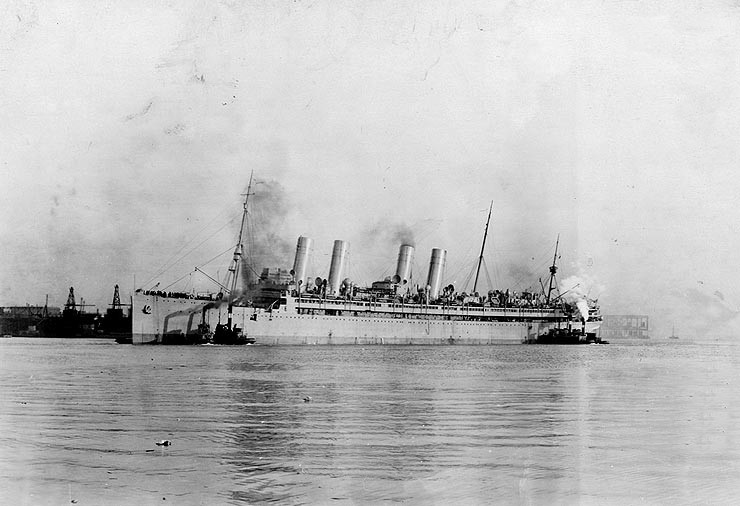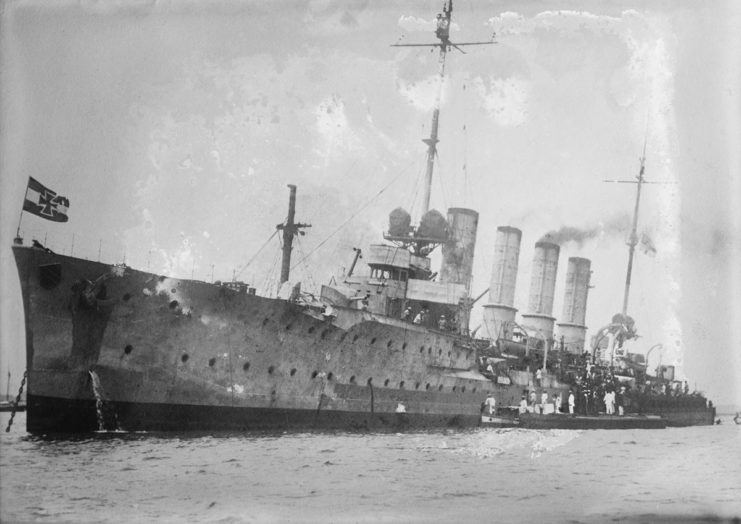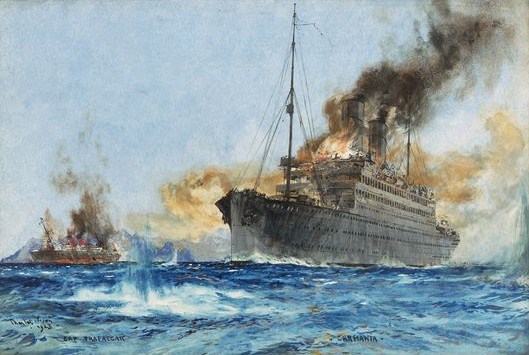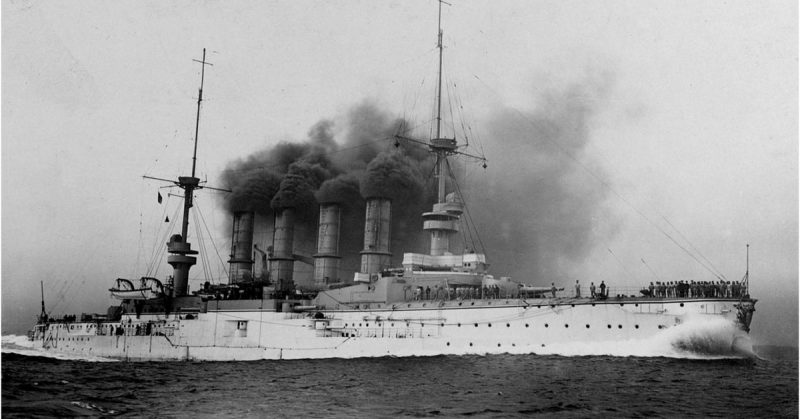Plunging through the ocean waves with guns at the ready, the surface raiders were a motley assortment of ships. Assembled to intercept enemy supplies during WWI, they plundered merchant vessels; boarding or sinking them for their resources.
Economic War
WWI was as much about economics as it was about action. To enable countries to wage war on an industrial scale, they needed raw materials. It was the age of global empires, in which colonies supplied the needs of their European conquerors. Just as modern markets transport goods around the world, so too did the imperial system.
Military resources like steel and gasoline were required, as well as less obvious ones like rubber. Food to keep soldiers and civilians fed and raw materials flowed toward Europe. During peacetime, ships imported the vast bulk of necessary resources quickly and cheaply but in wartime, it was more diffiucult.
Britain’s vast merchant shipping network was vulnerable to attack. There were no land routes into Britain, no near neighbors to send trucks and wagons across the border.
The Surface Raiding Strategy
The Imperial German Navy set out to attack British supply lines. Submarines were yet to play a part in the war, as at the outset they were an unknown quantity. The Germans pulled together a range of surface ships to raid British shipping. They were usually based far from home and to stay supplied they relied on special freighters, their colonies, and neutral ports.
There were three main types of surface raider: commerce raiders; armed merchant cruisers; and auxiliary commerce raiders. Some were purpose built, but many were ships hastily refitted for a new military life.

Commerce Raiders
The commerce raiders were military ships in the form of light cruisers. The Imperial German Navy had eight of them at the start of the war in 1914 – seven in the Pacific and one in the West Indies.
The Karlsruhe, the lone ship based in the Caribbean, headed to the mid-Atlantic. When the war was declared, it sank three ships in short order, then headed south. Off the Brazilian coast, the Karlsruhe sank or captured 15 British merchant ships and one Dutch vessel in just a month and a half. In November 1914 while steaming to the Bahamas aiming to harass ships there, she was destroyed by an unexplained explosion which killed most of her crew.
Five of the Pacific raiders headed east. They encountered the British off the coast of Chile, achieving a victory at Coronel. The British responded by sending a larger force to hunt them down.
Unaware, the German raiders headed to attack Port Stanley in the Falkland Islands, a British territory in the South Atlantic. The British task force was waiting for them. Four of the commerce raiders – the Scharnhorst, Gneisenau, Nürnberg, and Leipzig – were sunk. The survivor, the Dresden, was scuttled three months later.
Meanwhile, another light cruiser, the Emden sailed the Indian Ocean and southwest Pacific, achieving a spectacular level of success. In just over three months, the Emden captured five British merchant ships, sank 15, and also sank a Russian cruiser and a French destroyer. She was eventually tracked down by Allied ships and defeated by the Australian cruiser the Sydney.
The last German light cruiser, the Königsberg, was less successful. Sailing off East Africa, she attacked shipping heading through the Suez Canal. However, after sinking two ships, she became trapped in the delta of the River Rufiji where she was hiding. She was damaged by enemy fire and then scuttled.

Armed Merchant Cruisers
Armed merchant cruisers (AMCs) were generally made by equipping fast passenger liners with guns.
Germany’s AMCs were not terribly successful. The Cap Trafalgar was sunk by the British in the South Atlantic less than three weeks into the war. The American authorities interned the Prinz Eitel Friedrich and the Kronprinz Wilhelm in the spring of 1915.
The most successful German AMC was the Kaiser Wilhelm der Grose, which sank several ships before being crippled by a British cruiser and then scuttled. Even she only lasted until August 16, 1914, a month into the war.
The British and French also used AMCs. The British used them heavily, deploying 20 to protect sea routes between Britain and Ireland.
Like the Germans, they found the ships were too vulnerable to last long in action. The British lost 12 and the French 13. They eventually took the surviving AMCs out of combat service, using them as hospital ships and troop transports instead.

Auxiliary Commerce Raiders
Auxiliary commerce raiders took a more devious approach to the war at sea. They were civilian ships fitted with hidden weapons that enabled them to surprise their enemy when attacked.
Of the ten German auxiliary commerce raiders, the Möwe was the most successful. In two sorties, she sank 34 merchant ships. She also laid the mine that sank the British battleship King Edward VII.
Some of the German auxiliaries were minelayers converted to look like Scandinavian freighters. Sailing under neutral flags, they used their disguise to litter the sea with mines.
Beaten by the Allies
While surface raiders were a sound idea and attacking Allied commerce was vital, they were not hugely successful. Most of them were sunk, captured, or interned during the first year of the war. Their role was to be filled by submarines.
Want to become a trivia master? Sign up for our War History Fact of the Day newsletter!
Source:
Ian Westwell (2008), World War I
